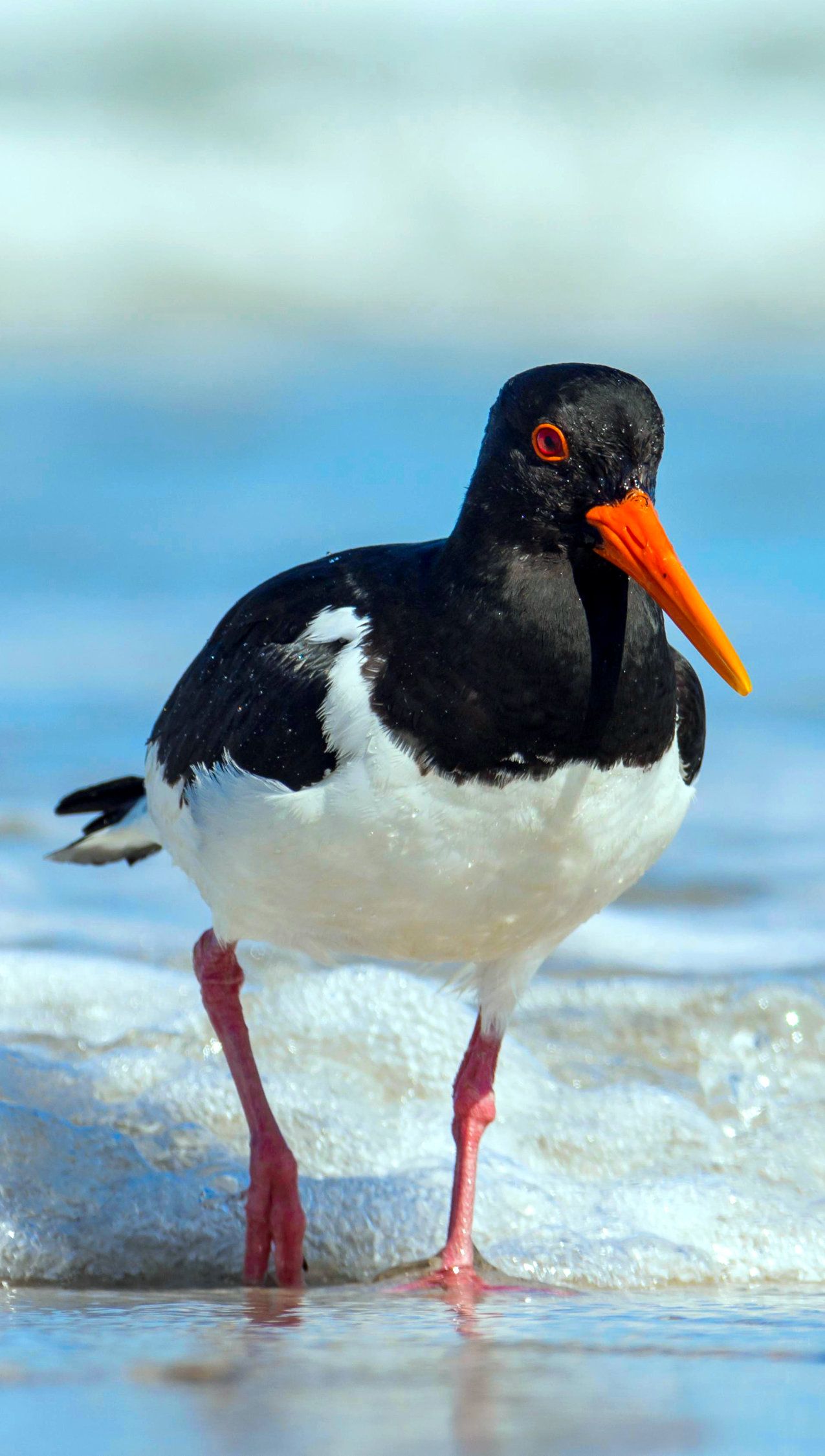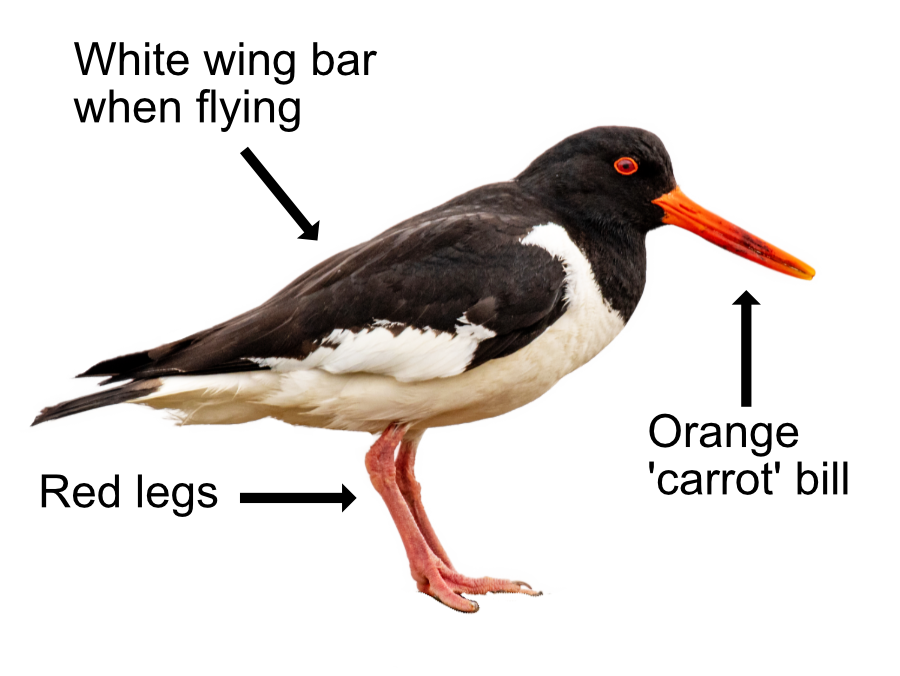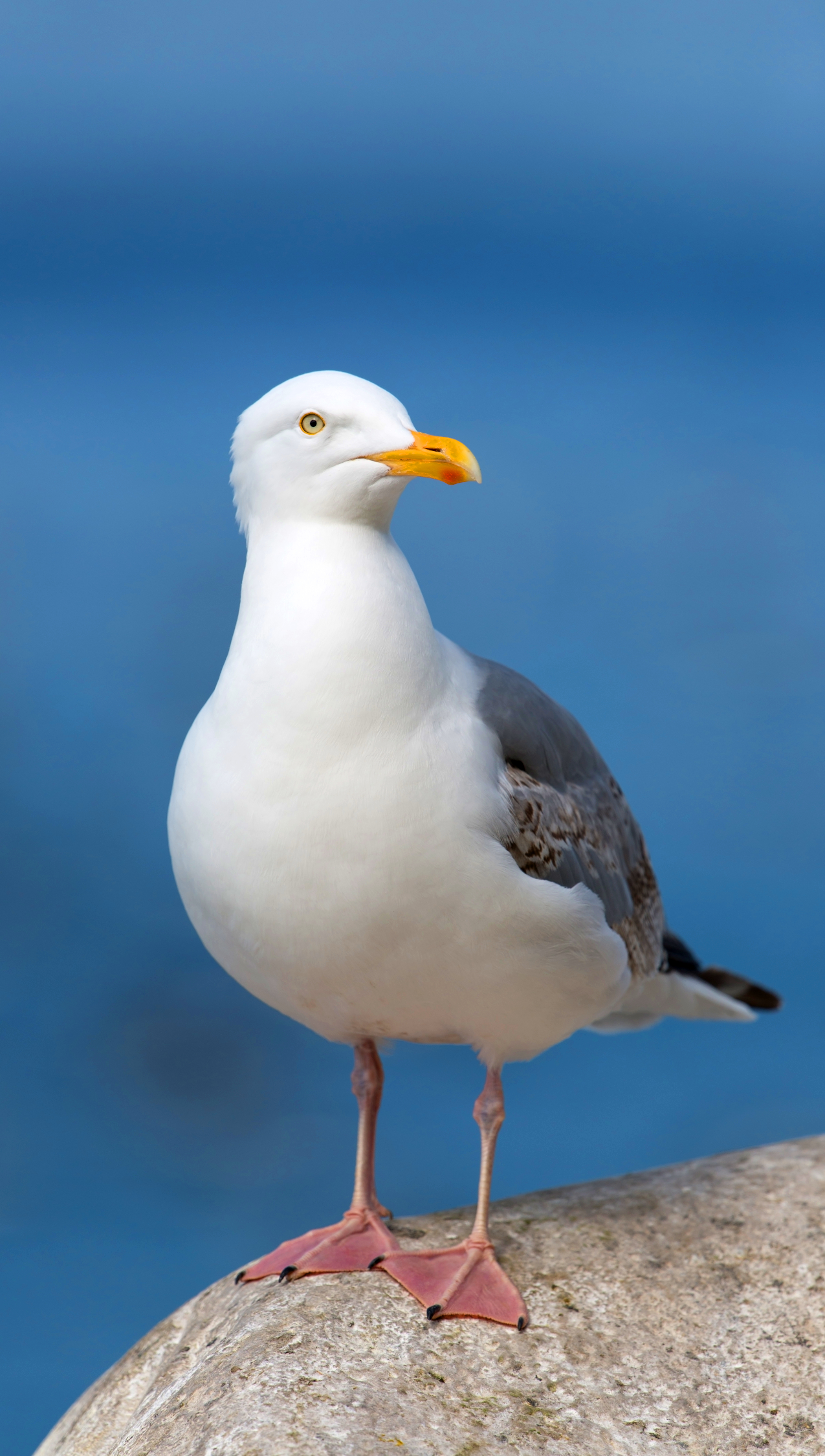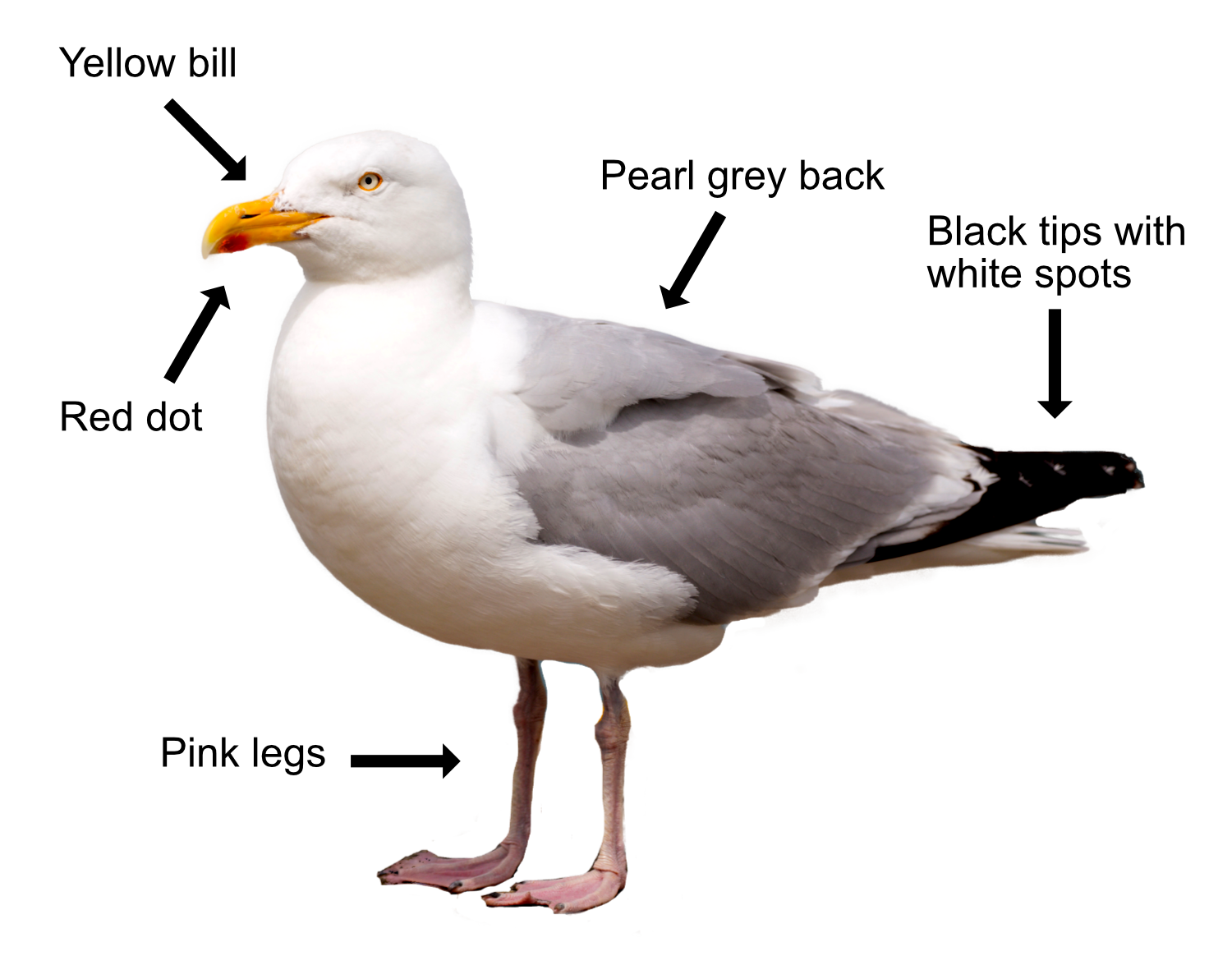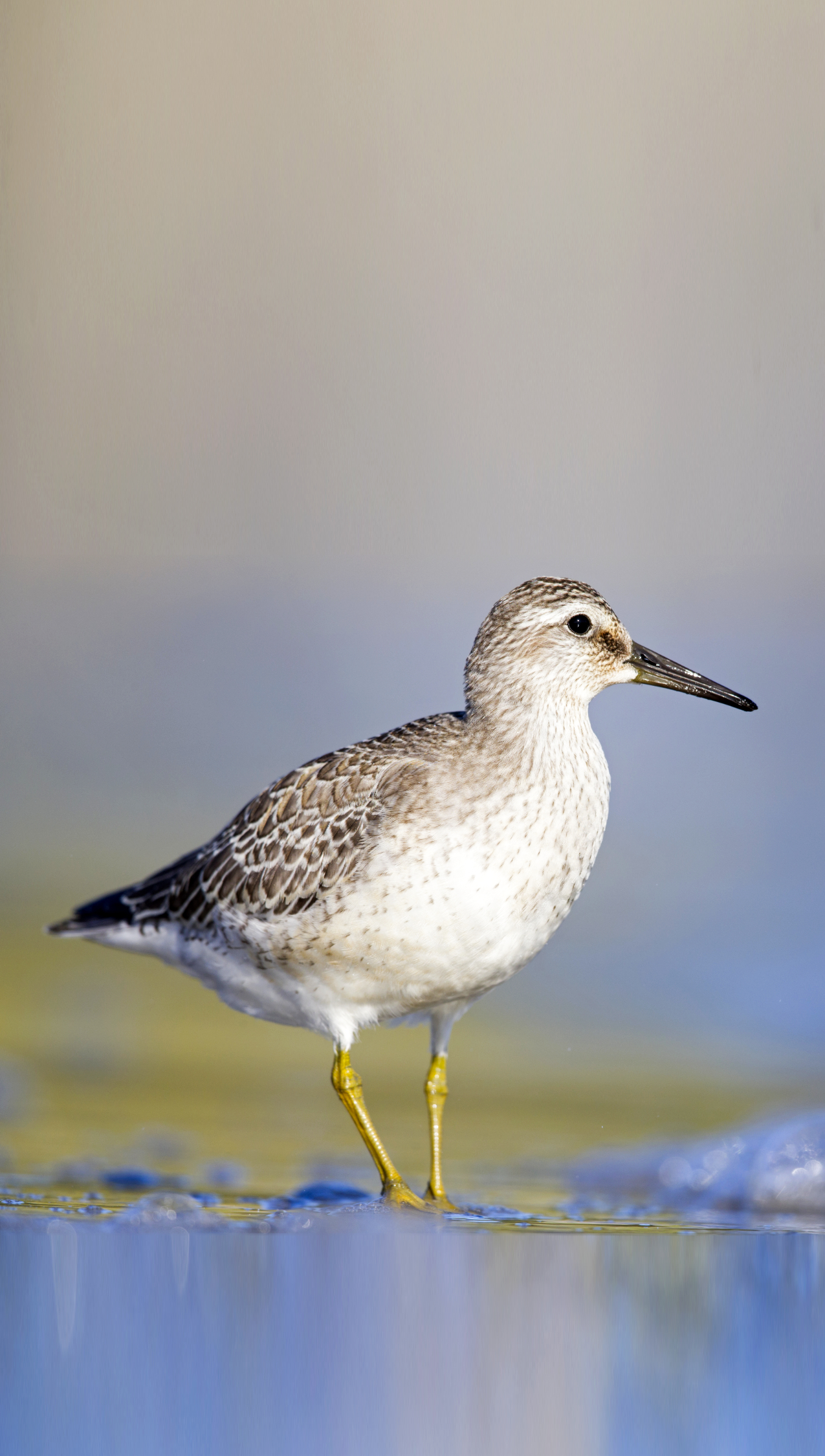
Knots, sometimes called Red Knots, gather in large flocks in winter on mud flats close to the water’s edge. They take off and swirl around in tightly packed formations, twisting and turning, flashing grey and white when pushed off by the tide or spooked. Flocks can be as big as 10,000 or more and it is rare to see one on its own.
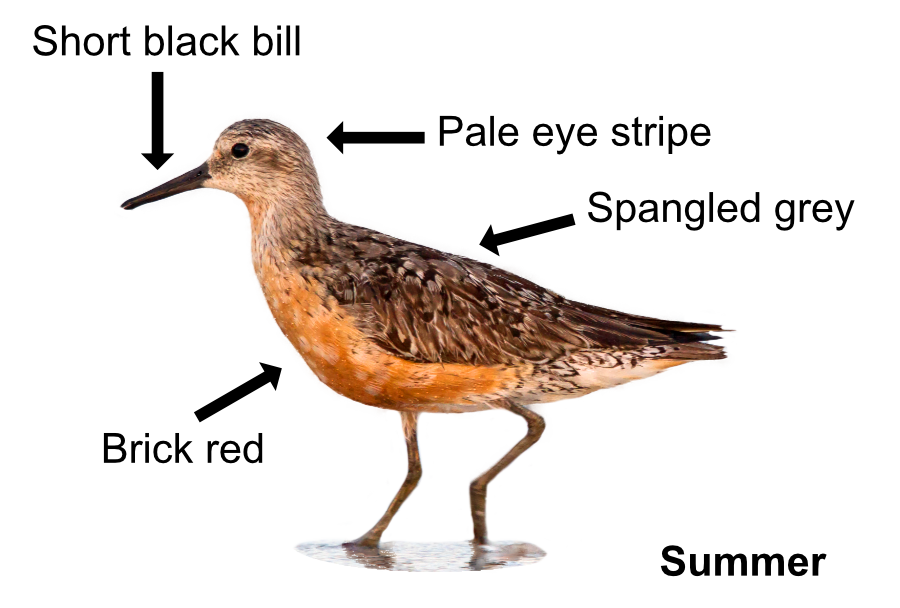
A Knot is a plump, dumpy looking wader with a short neck and black legs. In summer, it has brick red underparts, and a spangled grey back. In winter, it has white underparts and is a plainer grey. Their black bill is short and straight, and there is a short, pale stripe over the eye. In flight it shows a plain rump and very faint wing bar. Their call is a quiet "knut".
Knots feed slowly in close groups, probing their bills in the mud and sand. They have special sensory organs in their bill tips which help them detect food similar to the way echo location works in bats. They mainly eat insects, snails, molluscs and crustaceans found in the ground.
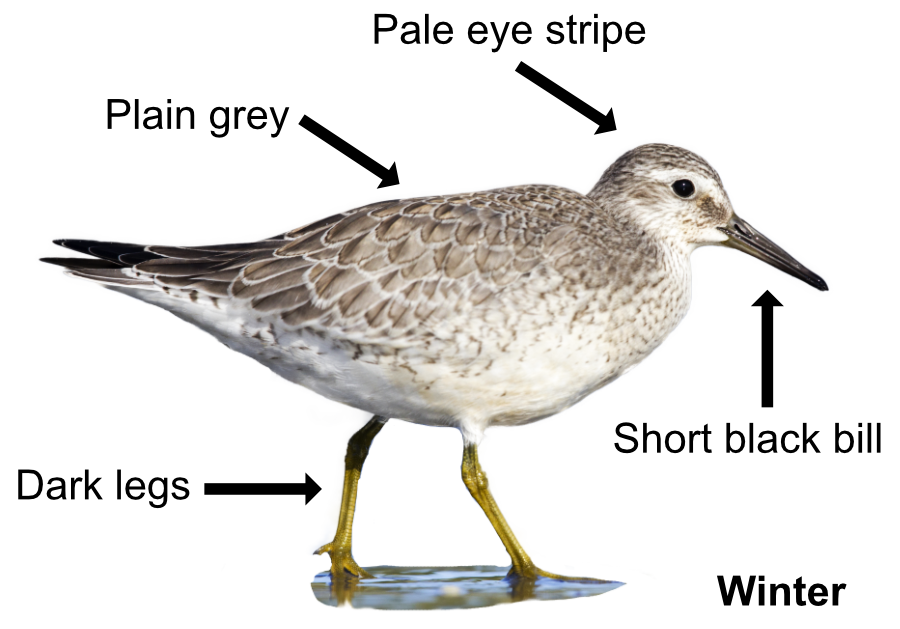
Most Knots seen in Britain breed in Arctic Greenland. They have to breed fast during the short Arctic summer. The nest is a shallow scrape lined with leaves, lichen and moss. The male constructs three to five nests in his territory, prior to the arrival of the female, who picks one and lays 3-4 eggs which hatch after 21 days. Both parents take turns incubating the eggs. Within a day of hatching, mum, dad and the kids move away from the nest to forage for food. Mum usually leaves in August, before the youngsters can fly, and dad looks after them until they are fully independent, about 20 days later. Dad and the youngsters migrate south separately in long, almost non-stop flights, only stopping at traditional sites to feed and moult before flying on. They can travel up to 15,000 km and lose up to 80% of their body weight during these long journeys. Over 320,000 Knots overwinter here between September and March.
Their Latin name is 'calidris canutus' where 'calidris' is from the Ancient Greek 'kalidris', a term used by Aristotle for some grey-coloured waterside birds. The 'canutus' comes from King Canute, the 10th century Viking King of England, who put his throne on the beach and commanded the tide not to come in. The tide came in and Canute had to move out of the way, just like the Knots do. Their English name 'Knot' is from the grunting sound of their call.
